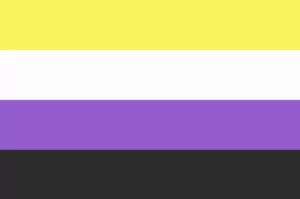What is cross currency triangulation?
Cross currency triangulation involves converting one currency to another through a third common currency. A cross currency triangulation transaction doesn’t use the US dollar (USD) as the settlement currency, the settlement currency could be the euro or the Swedish krona.
Cross currency triangulation (also known as a cross rate) is used to calculate an exchange rate between two currencies that are both valued against another currency. For example, in the UK, you’d value other currencies against the British pound (GBP).
Currency triangulation is usually used if direct exchange rates between two currencies aren’t available, or if the exchange rate between two non-USD currencies – the cross rate – is better by taking an indirect route; allowing users to gain a profit.
For example, in the UK the GBP would have published exchange rates with other currencies, such as the Euro (EUR) and the Polish Zloty (PLN). Yet when you want to exchange the EUR with PLN – the exchange rate isn’t published against these two currencies. In this case, you divide PLN by EUR to get the cross rate of Euros to Polish Zloty.
What is the cross rate?
The cross rate is the currency exchange rate between two non-USD currencies, valued against a third currency. This allows for flexibility while trading within the FX market.
How does cross currency triangulation work?
Cross currency triangulation uses intermediary currencies to convert one currency to another. For example, take USDEUR and USDCAD rates and then divide one by the other to get EURCAD.
This is its basic formula: AB X BC = AC
Popular triangulation opportunities are usually found with the CHF, EUR, GBP, JPY, and USD to convert from euros to home currencies.
What can impact cross currency triangulation?
The timelines for cross currency triangulation can be impacted by holidays, affecting any of the currencies involved. For example, if a currency pair is triangulated against USD and the conversion lands on a US holiday, the timeline will shift forward by one day (the next available business working day).
Below is a list of Currencycloud’s triangulated currencies, i.e. currencies that are converted via an intermediary currency.
| Triangulated via: | ||
|---|---|---|
| US Dollar (USD) | Singapore Dollar(SGD) | |
| United Arab Emirates Dirham (AED) | New Zealand Dollar (NZD) | Indonesian Rupiah (IDR) |
| Australian Dollar (AUD) | Omani Rial (OMR) | Indian Rupee (INR) |
| Bahrain Dinar (BHD) | Polish Zloty (PLN) | Malaysian Ringgit (MYR) |
| Canadian Dollar (CAD) | Qatar Rial (QAR) | Philippine Peso (PHP) |
| Chinese Yuan (CNH) | Russian Ruble (RUB) | |
| Czech Koruna (CZK) | Saudi Riyal (SAR) | |
| Hong Kong Dollar (HKD) | Singapore Dollar (SGD) | |
| Hungarian Forint (HUF) | Thai Baht (THB) | |
| Israeli Shekel (ILS) | Turkish Lira (TRY) | |
| Japanese Yen (JPY) | Ugandan Shilling (UGX) | |
| Kenyan Shilling (KES) | South African Rand (ZAR) | |
| Kuwait Dinar (KWD) | Romanian Leu (RON) | |
| Mexican Peso (MXN) | ||
An example of currency triangulation is if you take USDEUR and USDCAD rates and then divide one by the other to get EURCAD.
The benefits of cross currency triangulation
Businesses, investors, governments and individuals use cross currency triangulation to optimize the discrepancies in the bid-ask spread between non-USD exchange rates to make a profit.
Another reason to use currency triangulation is the flexibility and efficiency it allows within FX trading. It allows FX traders to adapt quickly as markets fluctuate as they can use another way to calculate exchange rates.
Converting payments
Using Currencycloud’s currency converter API, you can get 24/7 access to exchange rates. This can help you attract customers with low rates. Our API enables you to easily convert payments, allowing you to trade across hundreds of currency pairs.

